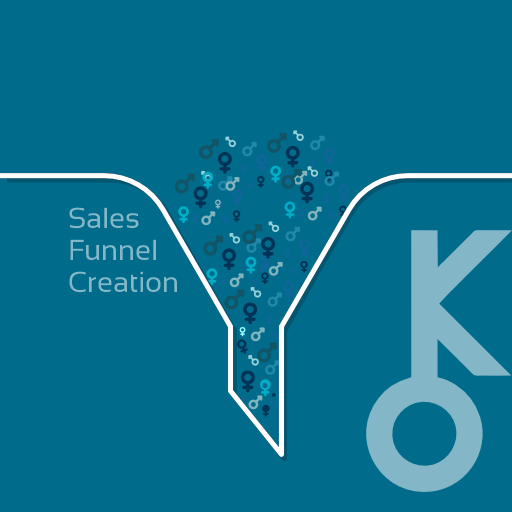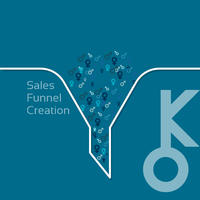Conversion Optimization

Conversion optimization is a crucial aspect of marketing that focuses on improving the overall performance of a website or digital platform in terms of its ability to convert visitors into customers or take any desired action. It involves analyzing user behavior, identifying areas for improvement, and implementing strategies to increase conversions.
Why is Conversion Optimization Important?
The success of any business heavily relies on its ability to convert users into paying customers. Conversion optimization helps businesses maximize their return on investment (ROI) by increasing the percentage of visitors who fulfill a specific goal, such as making a purchase, filling out a form, subscribing to a newsletter, or downloading an app.
By optimizing conversion rates, companies can:
Increase Revenue: Improving conversions means more customers are taking actions that directly impact revenue generation.
Enhance Customer Experience: Understanding user behavior helps create better online experiences tailored to customer needs and desires.
Reduce Acquisition Costs: Instead of solely focusing on driving more traffic or leads, conversion optimization aims at getting more value out of existing traffic and reducing the cost per acquisition.
Gain Competitive Advantage: Businesses with optimized conversion funnels have an edge over competitors by providing seamless user experiences that improve satisfaction and loyalty.
The Sales Funnel Approach
To effectively optimize conversions, it is essential to understand the concept of a sales funnel - a visual representation of the journey users take from being aware of your brand to becoming loyal customers. The sales funnel typically consists of several stages:
Awareness: Users become acquainted with your brand through various channels like social media, search engines, or referrals.
Interest/Consideration: Potential customers show interest in what your business offers by consuming content and exploring products/services further.
Evaluation/Decision-Making: Users compare options and different offerings before deciding whether to make a purchase or engage further with your brand.
Action/Conversion: This stage represents the desired conversion where a visitor becomes a customer by making a purchase, signing up for a service, or taking any other predefined action.
Loyalty/Retention: After completing the initial conversion, businesses aim to retain and nurture loyal customers through continued engagement and personalized experiences.
Steps in Conversion Optimization
To optimize conversions effectively, follow these steps:
Identify Goals: Clearly define what actions you want users to take on your website (e.g., purchases, form submissions) and establish key performance indicators (KPIs) to measure success.
Analyze User Behavior: Utilize analytics tools like Google Analytics to gain insights into user behavior patterns, such as bounce rates, click-through rates, and average time spent on each page.
Conduct User Research: Understand your target audience's motivations and pain points using methods like surveys, interviews, user testing sessions, or heatmaps to identify areas of improvement within the funnel.
Create Hypotheses for Testing: Develop hypotheses based on data analysis and user research that focus on addressing specific barriers within the sales funnel affecting conversion rates positively.
Implement A/B Testing: Test different variations of crucial elements in your sales funnel (e.g., headlines, call-to-action buttons) using A/B tests to determine the most effective changes that lead to increased conversions.
Optimize Landing Pages: Pay particular attention to landing pages since they are often crucial entry points for potential customers. Optimize these pages with compelling copywriting techniques and persuasive design elements.
Streamline Checkout Process: Simplify the checkout process by reducing friction points such as excessive form fields or mandatory account creation. Provide clear calls-to-action throughout the entire process.
Personalization and Segmentation: Leverage customer data to personalize messaging based on demographics, browsing history or previous interactions with your brand to create tailored experiences that cater to specific customer segments.
Monitor Results & Iterate: Continuously monitor the performance of your optimized funnel using analytics, track conversions and make data-driven decisions for ongoing improvements.
Key Principles to Remember
Keep it Simple: Minimize distractions, optimize loading times, and simplify the user experience to ensure a smooth conversion process.
Test & Refine: Continuously test different elements of your sales funnel to discover what works best for your target audience.
Provide Social Proof: Include testimonials, case studies, or ratings and reviews on your website to establish credibility and build trust with potential customers.
Mobile Optimization: With mobile usage increasing rapidly, ensure that your sales funnel is fully optimized for mobile devices to create seamless experiences across all platforms.
In conclusion, conversion optimization plays a vital role in driving business success by improving conversions throughout the various stages of the customer journey. By implementing strategic analysis techniques and making iterative changes based on data insights, businesses can increase revenue and provide exceptional user experiences.
Sponsored
Sponsored
Sponsored
Explore More:

The Impact of AI and Machine Learning
As technology continues to advance at a rapid pace, businesses are constantly looking...

Future of Sales Funnels
The future of sales funnels is an exciting and promising concept for businesses...

Lessons Learned from Failed Funnels
In the realm of sales funnel creation, case studies serve as valuable resources...

Successful Sales Funnel Examples
In sales funnel creation, case studies play a crucial role in demonstrating the...

Case Studies in Sales Funnel Creation
In the world of sales and marketing, case studies play a crucial role...

Sales Funnel Recovery Strategies
Sales funnels are a critical component of any successful sales and marketing strategy....

Improving Funnel Efficiency
A sales funnel is a crucial component of any business's marketing strategy. It...

Identifying Funnel Leaks
A sales funnel is a systematic approach to guiding potential customers through a...

Sales Funnel Troubleshooting
Sales funnel troubleshooting is the process of identifying and resolving issues or bottlenecks...

Sales Funnel Tools and Software: Landing Page Builders
Sales funnels are essential in driving conversions and increasing revenue for businesses. To...

Sales Funnel Tools and Software: Email Marketing Tools
Sales funnel tools and software refer to the various technologies and platforms available...

Sales Funnel Tools and Software: CRM Software
Sales funnel tools are software programs or applications designed to help businesses track...

Sales Funnel Tools and Software
A sales funnel is a framework used by businesses to guide potential customers...

Measuring Sales Funnel Performance: Analytics and Reporting
Measuring sales funnel performance analytics and reporting is a crucial aspect of any...

Measuring Sales Funnel Performance: Sales Funnel Metrics
Measuring the performance of your sales funnel is crucial for understanding the effectiveness...

Measuring Sales Funnel Performance: Key Performance Indicators (KPIs)
Measuring the performance of a sales funnel is crucial for any business aiming...